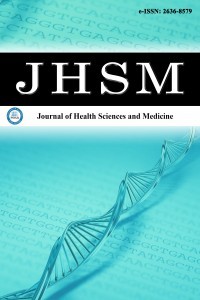Diyabetik bir hastada her görme kaybı diyabete bağlı değildir: vaka sunumu, dev suprasellar kitle, menenjiom
Diyabetik hasta, görme kaybı, suprasellar kitle, menenjiom vaka sunumu
In a diabetic patient, each vision loss is not dependent on diabetes: case report, giant suprasellar mass, menengiomjiom
Diabetic patient, visual loss, supracellular mass, menengioma case report,
___
- 1. Satman I, Yılmaz T, Şengül A, Salman S, Salman F, Uygur S. Population-basedstudy of diabetes and risk characteristics in Turkey: results of theTurkishdiabetesepidemiologystudy (TURDEP). Diabetes Care 2002; 25: 1551-6.
- 2. Resmini E, Minuto F, Colao A, Ferone D. Secondary diabetes associated with principal endocrinopathies: the impact of new treatment modalities. Acta Diabetol 2009; 46: 85-95.
- 3. Klein R, Lee KE, Knudtson MD, Gangnon RE, Klein BE. Changes in visual impairment prevalence by period of diagnosis of diabetes: the Wisconsin Epidemiologic Study of Diabetic Retinopathy. Ophthalmology 2009 Oct; 116: 1937-42. http://dx.doi.org/10.1016/j.ophtha.2009.03.012
- 4. Vranic A, Popovic M, Cör A, Prestor B, Pizem J: Mitotic count, brain invasion and location are independent predictors of recurrence-free survival in primary atypical malignant meningiomas: A study of 86 cases. Neurosurgery 2010; 67: 1124-32.
- 5. Nakasu S, Nakasu Y, Fukami T, Jito J, Nozaki K: Growth curve analysis of asymptomatic and symptomatic meningiomas. J Neurooncol 2011; 102: 303-10.
- 6. Rosenberg LA, Prayson RA, Lee J, Reddy C, Chao ST, Barnett GH, Vogelbaum MA, Suh JH: Long-termexperinecewith World HealthOrganizationgrade III (malignant) meningiomas at a single institution. Int J Radiation Oncology Biol Phys 2010; 74: 427-32.
- 7. Alexiou GA, Markoula S, Gogoy P, Kyritsis AP: Genetic and molecular alterations in meningiomas. Clin Neurol Neurosurg 2010; 112: 261-7.
- 8. Bădilă E, Weiss AE, Bartoş D, et al. Masseffect: a plethora of symptoms caused by an otherwise benign transitional pituitary meningioma. Case report, Rom J Morphol Embryol 2017; 58: 983-8.
- 9. Hershenfeld SA, Sharpe JA. Monocular temporal hemianopia. Br J Ophthalmol 1993; 77: 424-7.
- 10. Kwancharoen R, Blitz AM, Tavares F, Caturegli P, Gallia GL, Salvatori , Clinical features of sellar and suprasellar meningiomas. Pituitary 2014 Aug; 17: 342-8. doi: 10.1007/s11102-013-0507-z.
- 11. Grisoli F, Vincentelli F, Raybaud C. Intrasellar meningioma. Surg Neurol 1983; 20: 36–41.
- 12. Kinjo T, al-Mefty O, Ciric I. Diaphragma sellae meningiomas. Neurosurgery 1995; 36: 1082–92.
- 13. Taylor S, Barakos JA, Harsh GR. 4th, Wilson CB magnetic resonance imaging of tuberculum sellae meningiomas. Preventing preoperative misdiagnosis as pituitary macroadenoma. Neurosurgery 1992;31: 621–7.
- Yayın Aralığı: Yılda 6 Sayı
- Başlangıç: 2018
- Yayıncı: MediHealth Academy Yayıncılık
Aterosklerotik koroner arter hastalığı ile karışan koroner vasospazm olgusu
Hüseyin KANDEMİR, Yunus ÇELİK, Cengiz ŞABANOĞLU, Murat GÜZEL, Gökhan CİHAN, Özkan AĞRALI
Sperm değerlendirme testleri: dünden bugüne
Bahar SAY, Nermin DİNDAR BADEM, Ufuk ERGUN
Nazligül KARAÜZÜM YALÇIN, Emine KARTAL, Mustafa UTLU, Ahmet Veli ŞANİBAŞ, İdris BAYDAR, Aykut TURHAN, Elif BAYRAKTAR, Yildirim ALTUN, Ayşe ÇARLIOĞLU
Yunus Yılmazsoy, Havva Meltem Mutlucan
Seyfullah KAN, Adnan KARAİBRAHİMOĞLU
